Campaigns of 1836
Second Seminole (Florida) War
The battle of Black Point, December 18, 1835
A detachment of Florida Militia from Jacksonville commanded by Colonel John Warren was heading for Micanopy. He
decided to dispatch his baggage train with a small guard to go to Micanopy via Weptumpka Hammock. This was done
when the column reached Kanapaha Prairie just west of Gainesville. As soon as the force was split a Seminole force of
80 warriors attacked the baggage train and captured it. A few days later scouts from the main column found a hostile band
in the Weptumpka Hammock and Colonel Warren dispatched six companies to charge the woods. This scattered the Seminoles and
articles belonging to the baggage train was found in their camp.
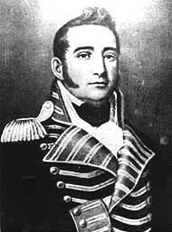
Campaign of Gen. Duncan Clinch
December 18 - 31, 1835
December 18, 1835
General Clinch moves the men under his command from Fort King to his plantation "Auld Lang Syne" (near Orange
Lake south of present day Micanopy) for want of supplies. He builds a fortification there and names it Fort Drane after
Captain Augustus Drane of the 2d Artillery who supervised its construction.
December 18-29
Fort Drane is designated as the primary base of operations for Gen. Clinch's campaign. The garrison of the fort consisted
of six companies of regulars, commanded by Lt. Colonel Fanning totaling 250 men. On December 24, Richard K. Call arrives
with 560 mounted Florida volunteers.
December 29-31
General Clinch's force departs Fort Drane minus one company of regulars and 100 men that are on sick call. On the 30th
Gen. Clinch stops 3 miles short of the Withlacoochee River and orders his force to be quiet and to make no fires so that
they may suprise the Seminoles in the Cove of the Withlacoochee the next day. The morning of the 31st started on a bad note,
excuse the pun. A bugler for the Florida volunteer force accidentally blew reveille first thing in the morning, so much for suprise.
This could of informed the Seminoles of Gen. Clinch's position, but it is more likely the Seminoles knew of his approach long before
this mess up. Upon reaching the place were Gen. Clinch's force was to cross, one leaky canoe was found an used for this purpose.
The men were ordered to stack arms and to post pickets (look-outs). The regulars were then ordered to start the crossing. When
all the regulars had successfully crossed the river the Seminoles opened fire upon the small force of regulars from a hammock that
surrounding the position of the regulars. After a short time the regulars were able to form up into lines of battle and performed a
series of three bayonet charges upon the concealed enemy which reduced the regular force by a third. The Seminoles fell back to regroup
after these charges were performed allowing the approximately 50 volunteers to cross the river to aid the regulars. The
volunteers quickly formed two companies and anchored themselves upon the flanks of the regulars to prevent them from being cutoff from
their only means of escape. The Seminoles at this point retired back into their stronghold in the Cove of the Withalacoochee and Gen. Clinch
decided to retire to Fort Drane. The Seminole force in this enagaement was estimated at 250 Seminole warriors and 30 Negroes lead by Osceola
and Alligator. The casualties of the battle included 3 Seminoles killed and 5 wounded, while Gen. Clinch's force had 4
regulars killed and 52 wounded with only 7 volunteers wounded.
January 9th, 1836
Skirmish near Micanopy. One soldier from 2d Dragoons killed.
January 17th
Skirmishes near St. Augustine. Largest is at the Anderson's Plantation. The St. Augustine Guards a local militia unit,
commanded by Benjamin A. Putnam was attacked by a force of approximately 120 Seminoles. The ensuing fight resulted
in the St. Augustine Guards suffering 50 percent casualties and their retreat back to St. Augustine.
January 17th
Captain Francis Belton prepares to defend Fort King (near Ocala) against any attack to the last man. His small garrison
is enlarged by the arrival of 50 marines commanded by Lieutenant Waldron.
January 17th
Brigadier General Abraham Eustis is ordered to St. Augustine with all the forces he can muster.
January 22
Brevet Major General Winfield Scott is ordered to assume command of the operations in Florida.
January 30
The garrison of one company of regulars and one company of militiais bolstered by the arrival ot volunteers from Charleston, South Carolina.
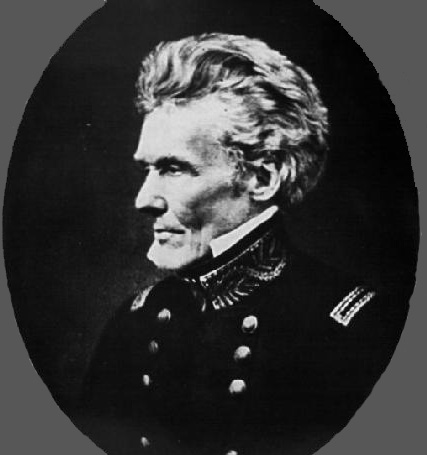 Campaigns of Gen. Edmund Gaines
Campaigns of Gen. Edmund Gaines
February 9 - March 9, 1836
Major General Edmund P. Gaines, the commander of the Western Department, arrives at Fort Brooke.
February 13th
General Gaines leaves Fort Brooke with a force of 980 men consisting of Louisianna and Florida Volunteers along with a
small detachment of regulars for Fort King. They retrace the steps of Dade's column and are the first White's upon the
site since Dade's column.
February 22th - March 6th
General Gaines arrives at Fort King on the 22d. February 26th General Gaines splits his force into three wings and
leaves Fort King for the Cove of the Withlacoochee. On February 27th, all three wings arrive at there previously
designated locations and start to scout for places to cross the Withlacoochee River. As the force started to look
for sutible places to cross, muskets were fired at the troops from the opposite bank. Gen. Gaines then ordered the
men to camp for the night. On the 28th the leading party, commanded by Lieutenant James
F. Izard, was fired upon. Lt. Izard fell with a mortal wound this started a 7 hour enagagement between the two forces
seperated by the river. During this engagement Gen. Gaines ordered the force to erect a log breastwork which would
be deemed Camp Izard. The siege of the small breastworks continued on the 29th Gen. Gaines had already suffered
one man killed and 32 wounded, yet he sends a message to Gen. Clinch at Fort Drane to come and attack the Seminole
force, that was numbered at 1,100 warriors, while they are concentrated around his small fortification. Gen. Clinch
does not move his force till the 4th of March to relieve Gen. Gaines, on this day Gen. Gaines has his only remaining tooth
knocked out by a Seminole musket-ball. On the 6th of March Gen. Gaines' force is approached
by a small party of Seminoles displaying a flag of truce. Gen. Gaines sends out a group to parley with his foe. As the two
parties started to talk Gen. Clinch's force arrives at the scene. Not knowing the circumstances in which the opposing
forces were engaged the advanced guard fired upon the party of Seminoles. This sent the Seminole force scattering
for the hammock and safety. Gen. Gaines turns over command of Camp Izard to Gen. Clinch on the 9th and eventually leaves
the theater of operations.
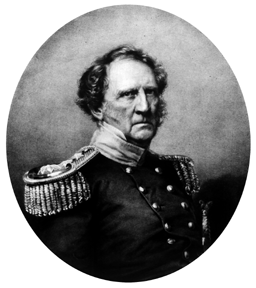 Campaign of Gen. Winfield Scott
Campaign of Gen. Winfield Scott
March 26 - April 5
At the start of the Second Seminole War Gen. Scott was designated the overall commander of operations in Florida.
He was a proven an effective commander when he fought against the Creeks after the War of 1812. He devised a plan of
attack that was composed of three wings.
Left Wing
Commanded by Gen. Abraham Eustis it was to be composed of 1,400 men. That included 4 companies of the First Regiment of
Artillery, one regiment of South Carolina mounted volunteers, one regiment of South Carolina volunteer infantry. It was to
march from St. Augustine to Mosquito Inlet (near present day New Smyrna) and then proceed to Volusia. It was to cross
the St. John's River at Volusia and head for Peliklaha (near present day Bushnell), from there it was to turn to the north
and approach the Cove of the Withlacoochee via Fort King.
Right Wing
Commanded by Gen. Duncan Clinch it was to be composed of 1,968 men. This included 720 regulars and the rest being apart
of Louisiana and Georgia volunteers. It was to march from Fort Drane to Camp Izard and cross the Withlacoochee River
at that point and drive the enemy southward into the two other wings.
Center Wing
Commanded by Colonel William Lindsay it was to be composed of 1,250 men. This included 750 Alabama volunteers, 260
Florida volunteers and members of the 4th Infantry. This column was to proceed from Fort Brooke directly north to the
Cove of the Withlacoochee and await the fleeing Seminoles.
Due to the lack of roads into, and good maps of, the interior of the Florida territory the only wing to actually reach the objective
was the right wing commanded by Gen. Clinch. The Left Wing was delayed terribly as it tried to cross the peninsula from
east to west. Having to cut its own roads and lacking the time and supplies to reach Fort King the column ended up going
to Fort Brooke instead. The Center Wing, commanded by Colonel Lindsay faired no better. The relationship between volunteers
and the regular army were always strained, at best. It was during their march to the Cove of the Withlacoochee that Colonel
Lindsay refused to let the Alabama volunteers have or purchase liquor for the journey, which won him no favor with the
Alabamans. When they reached the Hillsborough River, Colonel Lindsay decided he needed a fort built at this place to hold
his supplies. This fort would be named Fort Alabama (later renamed Fort Foster), in an attempt to appease the unruly Alabama
volunteers. He posted a small force to garrison the fortification and proceeded with the rest of his wing northward. After
trying for several days, until his rations were expended, to make contact with the other wings and failing he decides to head
back for Fort Alabama. When his advance guard reaches Fort Alabama they find a group of Seminoles mingling around and
inside the fort, the advanced guard fires and the Seminoles scatter to safety into the surrounding hammock. The wing finds
the garrison killed and the food taken from the fort. The wing arrives at Fort Brooke on the 4th of April with no rations.
By April 5th all the wings were headed back to their points of origin in the following manner:
Left Wing
Was to head south from Fort Brooke to Pease Creek (near present day Bradenton) then cross and head easterly to Volusia.
Right Wing
Was to scour the north side of the Withlacoochee River and eventually end up at Fort Drane.
Center Wing
Was to scour the south side of the Withlacoochee River and then return to Fort Brooke
Upon the return of the wings to their respective places of origin, the volunteers that are attached would be considered
as fulfilling their commitment of service to the army and released at the earliest opportunity. This would leave a total
force of 789 regulars to defend the frontier against attacks.
May 21
Gen. Winfield Scott leaves Florida and never returns.
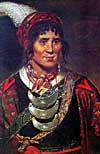
Seminole Campaign Against the Army
April 5th - September 18th
During this period of time the Seminoles and their allies started a campaign against the whites and army throughout
the territory.
April 5th - April 17th
Camp Cooper, a fortified postion erected by Gen. Clinch's column of Scott's campaign into the Cove of the Withlacoochee, and
its garrison of a battalion of Georgia volunteers and a detachment of regulars are besieged.
April 5th - April 17th
Fort Alabama garrisoned by a detachment of Louisisana volunteers is besieged.
April 4 - May 22d
A blockhouse that is constucted 12 miles from the mouth of the Withlacoochee River and garrisoned by 50 men is besieged by
a force of about 500 Seminoles. (The army had forgotten about this particular blockhouse until a messenger was able to run
the gauntlet and get word to the outside world of the predicament of the garrison).
April 14th
A burial party from Fort Barnwell in Volusia is attacked.
April 20th
The pickets at Fort Drane are rushed in the middle of the night in an attempt to overtake the fort. This would be one of the
few night attacks by the Seminoles during the hostilities. The attack is eventually repulsed after some brisk skirmishing.
The army and the whites of this period knew how unhealthy the summer months were to them. Due to the outbreak of diseases
the army reluctantly abandoned several fortifications due to the inability to sufficiently defend them from attack.
May 17th -June 9th Fort King abandoned due to half of its garrison on sick list.
July 17th Fort Drane ordered abandoned due to disease.
The summer proved to be most deadly to the army but this season didn't seem to hamper operations of the Seminoles.
July 9th
Fort Defiance, in Micanopy, is besieged. The fort is saved by an unorthodox method by its commander. He decides that he would
leave the fortification and double envelope his foe which suprisingly succeeds.
July 19th
The troops from the recently abandoned Fort Drane were heading for Fort Defiance in Micanopy when they are attacked near
Welika Pond. The column is saved by a relief column sent out from Fort Defiance. This engagement would later be known as the battle of Welika Pond.
July 23d
Lighthouse keeper John Thompson and his man servant were attacked at the lighthouse located at Key Biscayne on Cape Florida.
The two men defended themselves against the attackers and were eventually driven to the top of the lighthouse when Oil drums
on the bottom floor caught fire. Thompson thinking he would rather die quickly than slowly, throws a keg of black powder down the
stairs. To his amazement the fire is blown out and the Seminoles retreat. Upon their escape from their station they are saved
by sailors from the United States schooner Motto.
August 15-21
Major B. K. Pierce is ordered to leave St. Augustine with a force of 125 men and 27 wagons and close Fort Defiance. When Major Pierce arrived
at the fort he was suprised to fine 147 men on the sick list and Osceola in command of Fort Drane. He immediately organized a
force of 110 men to retake Fort Drane. When the column reached Fort Drane they suprised a party of Seminoles in a clearing. who soon scattered
into the surrounding hammock. Major Pierce thinking his force was insufficient to charge the hammock retired back to Fort Defiance.
He would be breveted for this action to the rank of Lieutenant Colonel.
September 18
Colonel Warren of the Florida Militia sends a reconnaissance force into San Felasco Hammock, north of Gainesville. It is
ambushed by a large force of Seminoles. Colonel Warren's force consisted of 100 men and one cannon. During this engagement
the Seminoles actually charged the artillery piece, not once but twice, this would be one of the only times in the war this occurs.
 Campaign of Governor Richard Call
Campaign of Governor Richard Call
May 30 - December 9
May 30
Governor Call assumes command of all forces in Florida by default.
September 18
A brigade of Tennessee Volunteers march into Tallahassee and Governor Call enthusiastically starts his camipaign.
October 8 - 17
Call's force has grown to almost 1,350 men as he had reached the opposite bank of the Cove of the Withlacoochee. Upon
the arrival of his advance guard to the rivers edge they noticed a party of 40 - 50 warriors, they opened fire upon this group
and kill 14 of them. Attempting to cross the river to further press the Seminoles, they find that the river is to swollen by rain,
and the musketry from the other side to intense to cross. At this time the force decided to return to Fort Drane for much needed
supplies.
November 13th
Gov. Call's force crosses the Withlacoochee and starts his search for the enemy's stronghold. During their search the force
finds 3 abandoned villages and burns them. Desperate to find and engage the enemy Call splits his force into two wings a
Northern Wing under his direct command and a Southern Wing under the command of Colonel B. K. Pierce.
November 17th
The Northern Wing finds a village in the path of their march. Call sends the Tennessee mounted volunteers to ride on the
village dismount and charge the encampment. The Seminoles scatter into the surrounding hammock, after a half an hour
the engagement is over. The resulting chase produced the capture of the villages supplies and horses, along with 20 killed. The
loss suffered by Call's force was one killed and 10 wounded.
November 18th
Scouts from the Northern Wing come across yet another village, this one numbering about six to seven hundred people.
Call orders his force into a single line, the infantry in the center and the mounted volunteers on the flanks. The order is given for
the center to charge the encampment and the flanks to prevent their envelopment as they move forward. This engagement
last about a half an hour and results in 25 Seminoles killed and a unknown amount of them wounded at a price of 3 men killed and
12 wounded.
November 19th
Both wings converge upon the site of Dade's battlefield the predestined rendezvous point.
November 21st
With both wings now re-consolidated he plans an advance upon a village reported to be in Wahoo Swamp. Call forms up his
troops in a single line that would extend for about a mile. The order was given to hold their fire until they were 50 yards from
the enemy and fire a volley followed up by a bayonet charge. Chaos soon followed as men and units stumbled through the
thick underbrush in pursuit of the fleeing foe. Upon reaching a dark water stream the men stopped, believing due to the color
of the water that it was to deep to cross. Major David Moniac (a full blooded Creek who graduated from the Military Academy)
approached the stream and started to look for a crossing location as he stepped into the water, a musket-ball found its
mark an killed him. Since the stream was considered unfordable the force decides to fall back to a re-supply point. Through
later inteligence the force opposing Call's force this day numbered 200 Negroes and 420 Seminoles lead by Yaholoochee (Cloud)
and Osuchee (Cooper).
November 22d
The decision is made to march the force to Fort Barnwell in Volusia, a distance of 50 - 65 miles.
November 27th
Call's force arrives at Fort Barnwell.
December 9th
Call receives orders to turn command of the forces in Florida over to Gen. Thomas S. Jesup.
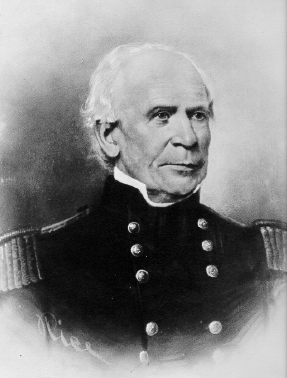 Campaign of Gen. Thomas Sidney Jesup
Campaign of Gen. Thomas Sidney Jesup
December 9 - December 31st
December 9th
Gen. Jesup assumes overall command of the troops in Florida.
December 12th
Gen. Jesup leaves Volusia in an attempt to locate and capture either the force led by Micanopy or the force headed by
Osceola in the Tampa Bay area.
December ??
Gen. Jesup deems a fortification to be built upon the site of Dade's battle. It would be named Fort Armstrong after its
designer and first commander Robert Armstrong of the Tennessee brigade.
Gen. Jesup starts to re-evaluate the position of the army and the defense of the frontier. He deems it necessary that only
a handful of forts are needed during the subsequent campaigns into the Witlacoochee River region. The following is a list
of fortifications that were slated to remain and act as supply depots:
Fort Foster; located on the Hillsborough River 25 miles from Fort Brooke
Fort Dade; located on the Withlacoochee River 29 miles from Fort Foster
Fort Armstrong; located on the site of Dade's battle
Fort Clinch; located at the mouth of the Withlacoochee
Fort Drane; southwest of current day Micanopy
Fort Barnwell; located at Volusia, 12 miles south of Lake George.





